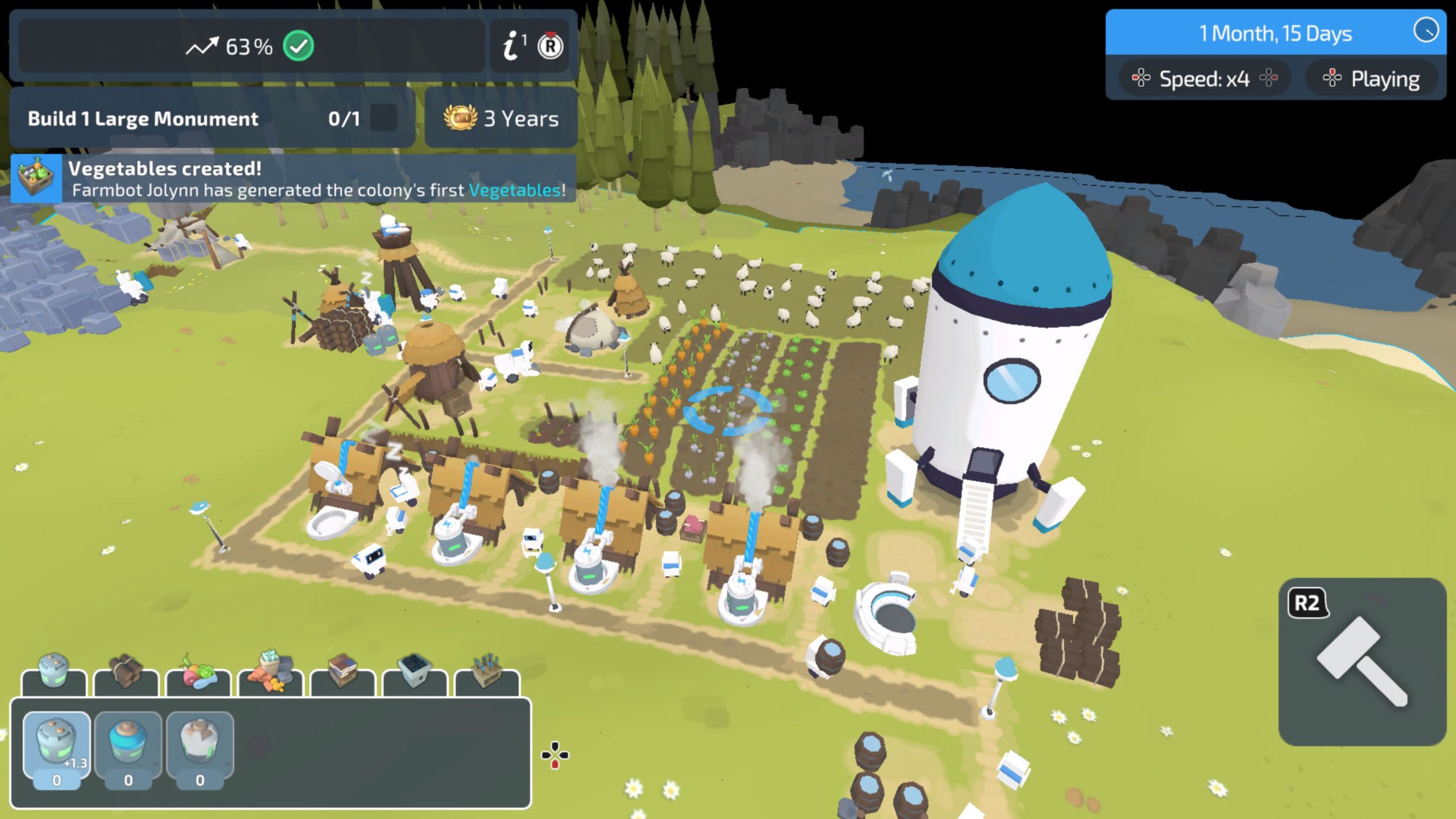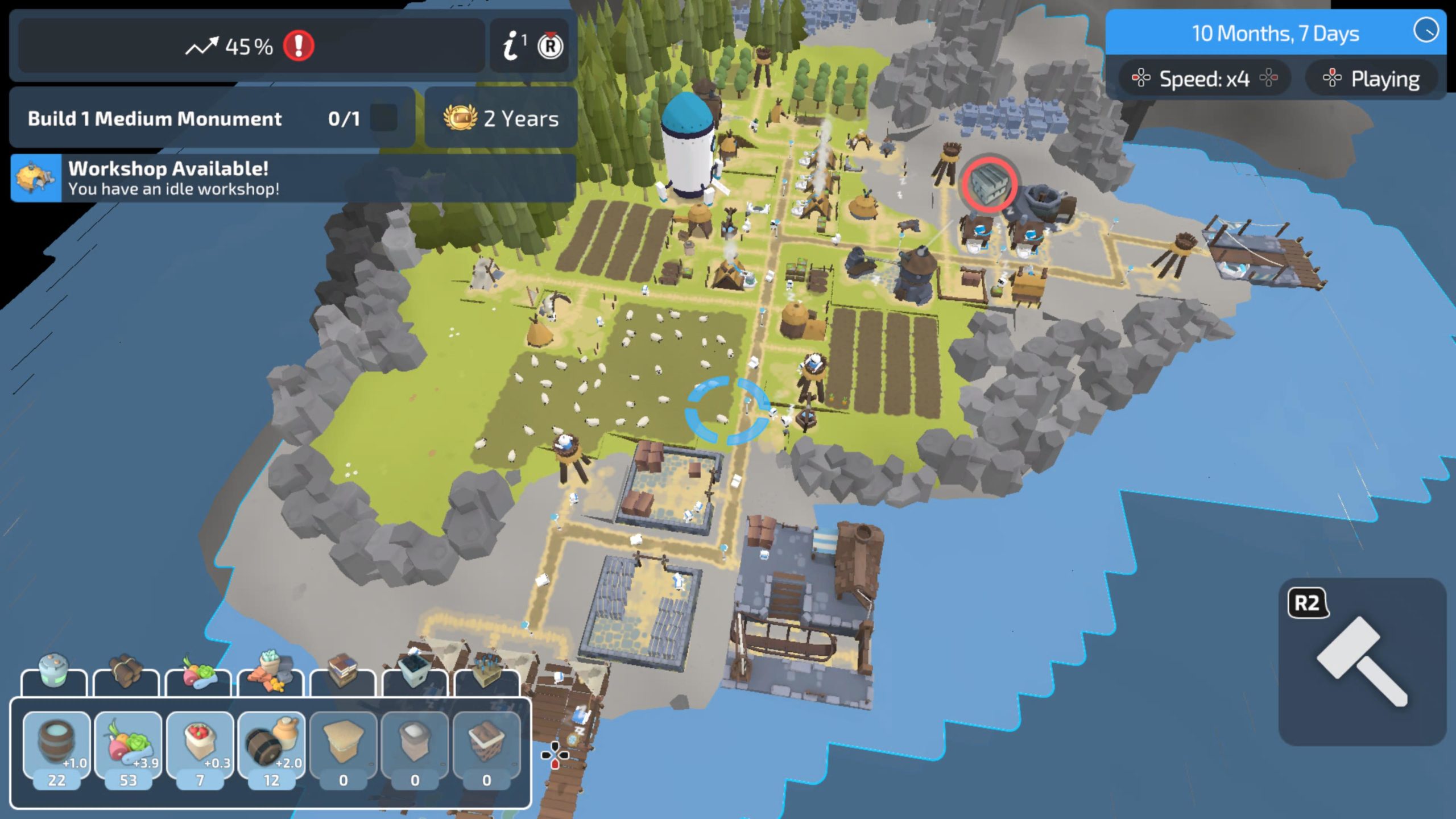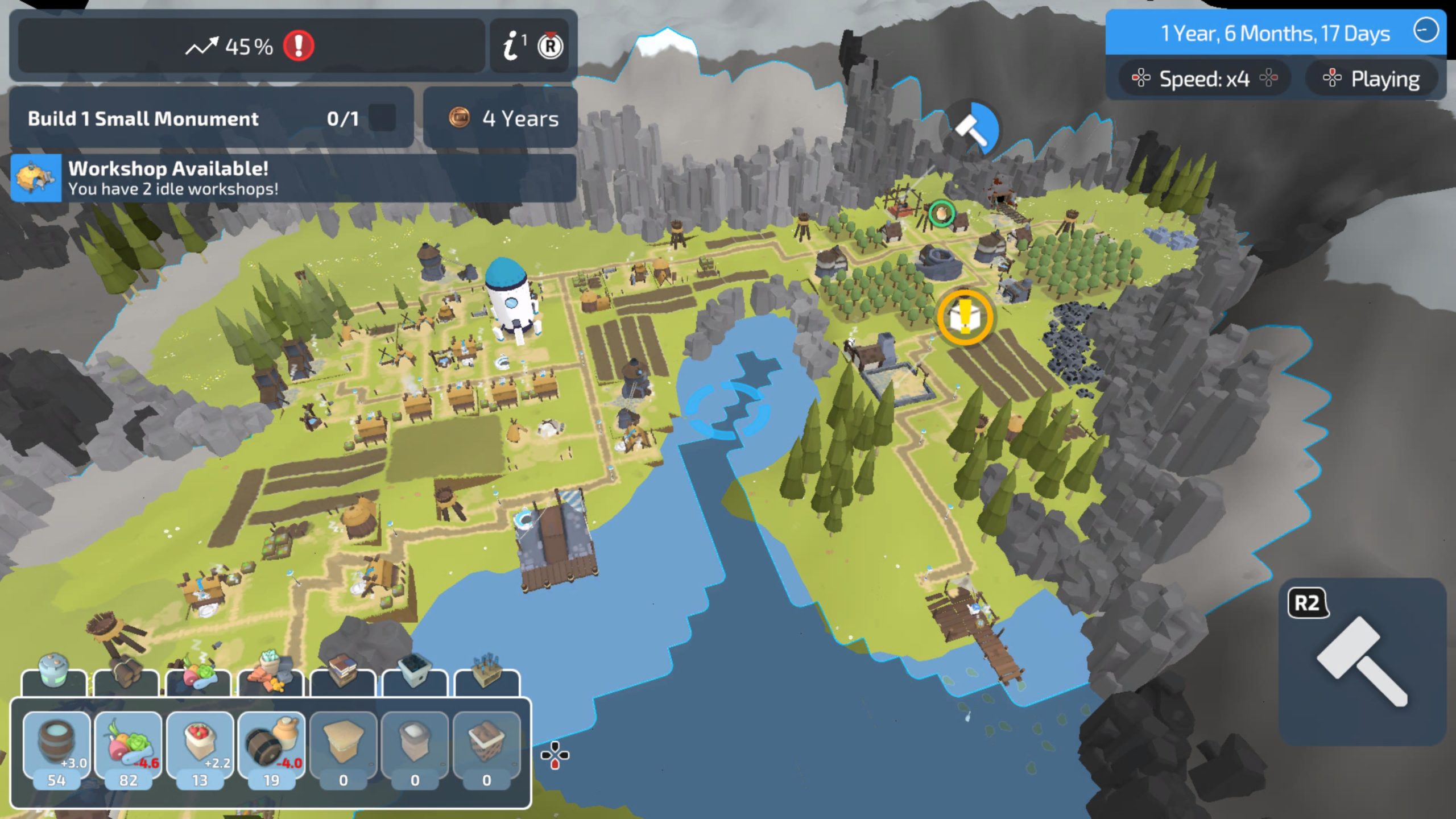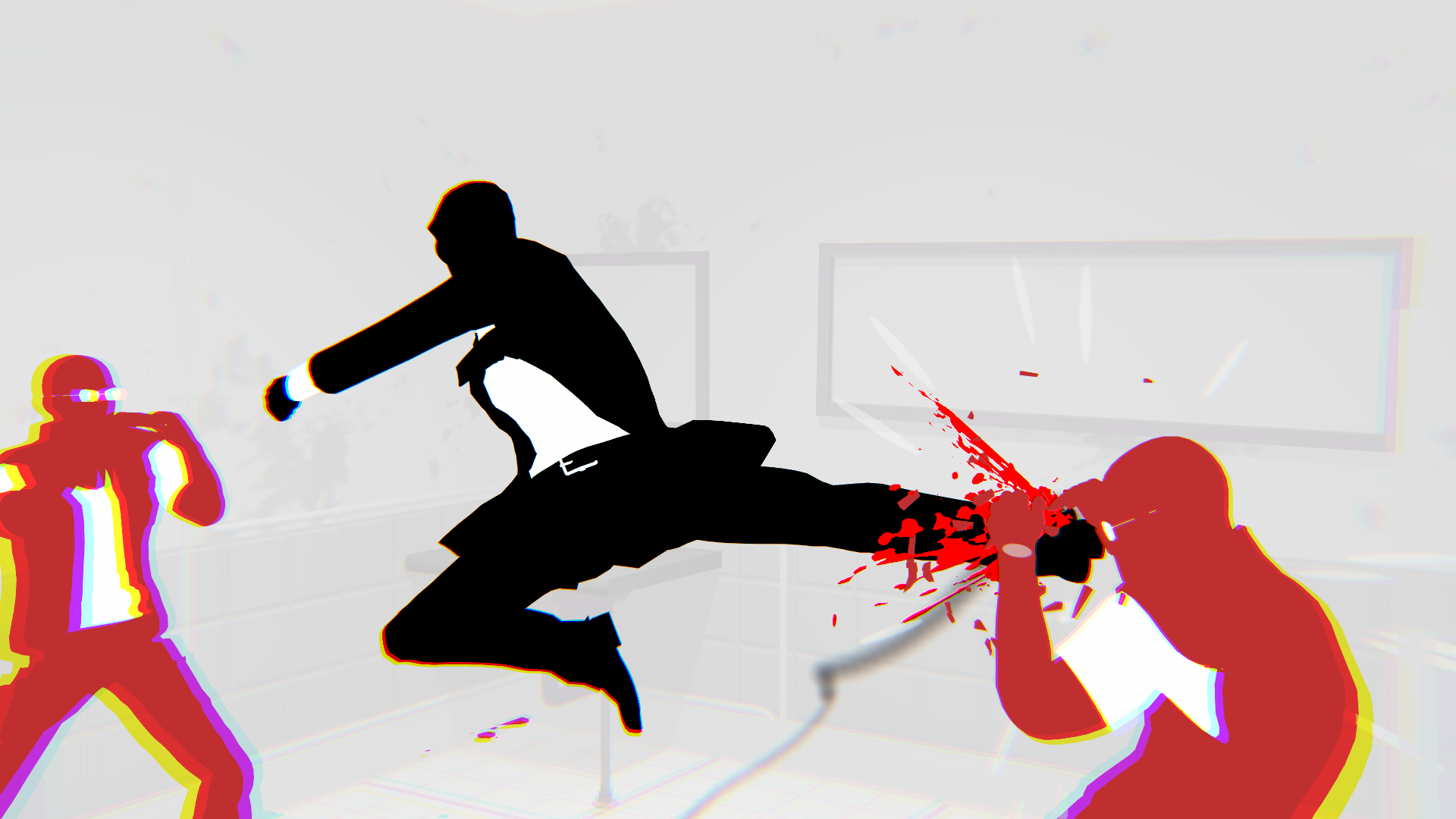The Colonists Review (PS4) – Robots From The Skies
A chilled out settlement builder, The Colonists makes a new home on consoles. The Finger Guns Review.
It’s 2035 and humanity has managed to create a self-replicating robotic race that can mimic the needs of a human. These robots gain sentience and are unsatisfied simply serving humans. They want to become human. So they escape from Earth on a rocket ship to look for a planet they can call home. These robots are The Colonists, the cute, cybernetic stars of this game.
The Colonists is a relaxed settlement builder from Codebyfire, Mode 7 and Auroch Digital. It’s inspired by the likes of The Settlers and the Anno games and those influences certainly shine through. The core of the game is a 14 mission branching campaign that’s split between peaceful and military lanes. In the former, the aim of each mission is to build a particular structure or achieve a certain scientific feat by a certain time. The faster the target is achieved, the better the medal rating from Gold to Bronze. In the military levels, the aim is to use watch towers to capture the territory of AI opponents. Capture their rocket ship and you win. If your opposition manages to capture yours, it’s game over.
Computer Resource Scheduling For Maximum Productivity
While The Colonists might list the Settlers and Anno games as its inspiration, there’s quite a lot of Factorum in this game too. There’s no failure conditions for the pacifistic levels of the campaign or in the sandbox mode. The robot race can’t die off because of a lack of water or food. They simply stop being as productive or stop working altogether. This isn’t a settlement game built around survival which is so often the staple of the genre. Instead, this is a game about being as productive as possible and getting things done quickly.

Each level begins with the landing of a rocket. This acts as the jumping off point the the whole colony, supplying a little L1 energy to get everything started. From there on out, every building and facility is connected to a web of dependencies. The lumberbot will chop down trees in the world and turn them into logs, but in order to run, it’ll need L1 energy. L1 energy is generated by residential buildings, built from logs, which need food and water to run. Water can be retrieved from a well and food can be obtained from farms that are dependent on L1 energy. Everything is connected and can not operate in isolation of everything else.
As The Colonists build towards a self sustaining colony, they’ll progress through 3 levels of scientific achievement. Advanced by research at workshops that’ll need to be improved over time, every type of facility can be upgraded from level 1 to 2 and finally level 3. As each building type gets better, they get more effective/productive – but their underlying dependencies become more complex. Level 2 buildings of any type need L2 energy which is generated by Level 2 residents – but these need apple juice to function. To create this you’ll need an orchard and an apple press which need to be unlocked via research. Eventually, you’ll be making printing presses, brickyards, paper mills, tanneries and even space ports, all of which have their own prerequisites and building materials.
All of these buildings have to be linked with roads and paths that can transport items. Each section of road comes complete with its own little robot that will move resources up and down from flag to flag. This is another pinch point of productivity. Only 4 items can be left at each road flag for transportation so if you’ve got 2 arms of a T-junction trying to send items down the 3rd, you’ll create a bottle neck.

In some situations, roads aren’t possible and despite these robots being quite technologically advanced, they have no idea what a bridge is. Go figure. If you need to link 2 landmasses that are separated by water, you can set up harbours, build ships and designate shipping routes. In some missions, this is essential as some resources just can’t be found locally.
Home Is Where Your Rocket Lands
Each level in the passive arm of The Colonists’ campaign offers a new challenge that’s there to guide the player to more expressive colony design. Whether it be a limited amount of locally sourced resources – stone, coal, clay, gold etc – which requires the expansion of borders in order to find some or a lack of space, requiring smart, frugal colony design, it’s a campaign that pushes the player to think of their building practices. By doing so, the lattice of dependencies for each facility/building are stretched as the player attempts to keep everything advancing towards the goal while dealing with a new set of problems.
In the Colonists’ sandbox mode, you get to build until your heart’s content with whatever setting you see fit. It’s here you get to experiment with your budding colony design to see what will work and what won’t. Once you’ve completed the campaign and feel suitably ready for a challenge, there are also a collection of challenges that will really push your abilities.

Robo-Border Patrol
The military aspects of The Colonists take a slightly different tact. There’s no unit building or war strategy to speak of. Here, the focus is more on rapid expansion, claiming territory and then controlling the resources found there. To do that, you need to build watch towers. These towers are the only way to extend the territory of your robot clan. By claiming territory, your resource gathering installations can then gather or mine those important assets like stone, iron and coal from those areas. Anything outside of your territory or in an opposition’s claimed area is out of bounds.
Claiming territory isn’t quite enough however. Over time and with research and development, those watch towers can be equipped with weaponry like arrows and cannons. Arm them with ammunition (another dependency that demands more resource) and they can fire at any opposing towers that are in range. Once an opponent’s tower is destroyed, you take control of that tower and any enemy building that ends up in friendly territory are burned and destroyed.
All of this exists upon the same research tree and dependencies as the peaceful game modes. This means while you’ve always got to keep a wary eye on your borders, you’ve also got to be building up your colony to help it advance along the research trees faster than your opposition. While not as active or engaging as some settlement building games that focus on survival, it’s another spinning plate in the air which adds some welcome tension.

New human-computer interaction
The Colonists was a game originally built for PC inputs – using mouse and keyboard – but Auroch Digital have totally reworked the UI and inputs to accommodate console controllers. For the most part, these changes pay off and are very intuitive. Using radial menus triggered with shoulder button presses, everything is just a few flicks of the thumb sticks away. Navigating the world, zooming and altering the view angle have all been adapted for a tried and tested formula too. The menus, resource demand and productivity monitoring charts look a little cluttered but are easily accessible with a notification system which quickly flags up issues.
These changes have created a new issue however. A few times during my time with the game, 2 separate menu boxes overlapped on screen. This was usually during the first few levels when the game is doing its best to guide the player through the many available menus. It takes just a few clicks to get back to where you wanted to be but it can be confusing when you’re trying to learn the ropes.
Other than that issue, the PS4 version of The Colonists is an excellent port. There’s no performance issues and the whole game feels at home with a DualShock 4 controller.

In Space, No One Can Hear You Colonise
The Colonists has a lovely and clean, grid bound art style which is very satisfying. Because everything in the game is built across blocks (which is very accommodating to terrain, by the way), you can fill out every block of available land space if you so wish. Because of the art style, doing so becomes very gratifying. It’s like ASMR for your retinas as you attempt to reach utilisation and productivity zen. The robots themselves are charismatic little doo-dads, each of which takes on a slightly different aesthetic based on their role in the colony.
The sound effects and music of The Colonists are also very well pitched. The little clatters of the robots making something or the thuds as trees are chopped down are fulfilling and pleasing on the ear. The music in the game is the perfect kind of backing too – it’s chirpy and gentile with just enough of a beat to tap your foot along to.
The first time I sat down to play The Colonists on PS4, I began at 8:30PM. The next time I checked the clock, it was 2:45AM. I’m convinced there’s some kind of dark magic hidden in the lines of code for this game. It makes time fly by with incredible ease. I’ve only had the game for a week but at the time of writing and I’ve already managed to rack up more than 30 hours of play time. Give this game the chance and you’ll find yourself losing evenings to it without even noticing.
The Colonists might not be the deepest of settlement games but it’s an engrossing one with a focus on productivity. It’s simplistic enough to act as an excellent introduction to the genre while having enough depth to please veterans looking for a challenge. What’s more, it hasn’t lost anything in the jump from PC to PS4.

The Colonists is launching on PS4, Xbox One and Nintendo Switch on May 4th. The game is already available on PC.
Developer: Codebyfire / Mode 7
Publisher: Auroch Digital
Disclaimer: In order to complete this preview, we were provided with a promotional copy of the game. For our full review policy, please go here.
If you enjoyed this article or any more of our content, please consider our Patreon.
Make sure to follow Finger Guns on our social channels – Twitter, Facebook, Twitch, Spotify or Apple Podcasts – to keep up to date on our news, reviews and features.



